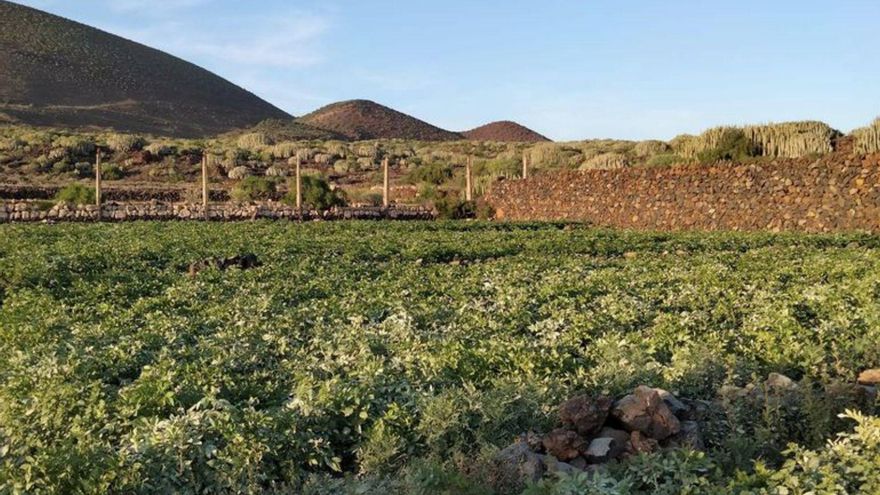
The Tabona environmental group denounces a private action authorized within the protected area and warns that there are indications, in other points of this special natural reserve, that they will cause more damage without the competent administrations controlling and intervening to prevent it.
The attacks on the Malpaís de Güímar are intrinsically linked to its protection. A paradox that the newspaper library supports; walkers and ecologists, too. The Tabona collective has just launched an “SOS” in which it points to the Government of the Canary Islands as responsible for breaching current legislation for not drafting the new Master Plan within the year following the one required by law, when in 2006 the special nature reserve was extended to cover the entire space occupied by the Malpaís.
Mónica Díaz, spokesperson for the Southeast environmental group, denounces that the absence of this “fundamental because perceptive” document leads the administration to make “wrong” decisions. She cites the case of the authorization to plow and cultivate a strip of land that is carried out in Amogio, “within the special natural reserve.” In addition, on the north side there is an apiary with an access track “within the special nature reserve”. To the south, the Güímar City Council plans to develop “a piece of the special nature reserve” for public use as part of the Puertito de Güímar Partial Plan.
Extension.
It was December 29, 2006 when the Parliament of the Canary Islands approved Law 13/2006, of December 29, on extension of the special nature reserve to the entire Malpaís de Güímar, a text which established the disappearance of the Ecological Sensitivity Area (ASE) located towards the highway and the areas “of low protection category” that are located on the sea side. All this raised to 2,903,000 square meters the area protected for 16 years. The agreement was published in the Official Gazette of Canary Islands (BOC) on February 27, 2007. The Canarian Government had one year from then to draw up the new Master Plan for Malpaís de Güímar. Does not exist.
Estate.
This fact, Tabona warns, leads to authorizing the clearing of an area included in the Malpaís by the area called Samarines, “although the work is being carried out in Amogio.” There, a businessman from the primary sector uses a mechanical shovel and prepares “a large piece of protected soil” to cultivate. The circumstance occurs that the work is authorized based on the Master Plan of June 2, 2004, “but without adjusting to what is required by that outdated document to grant authorization.” The environmental group affirms that this area is required to have been in production recently, “but it has not been cultivated there for decades.” That strip was in the recovery phase, with flora and fauna colonizing this soil, which had also become a favorite space for birds, according to Tabona.
hives.
In another point of the Malpaís de Güímar, to the North, an apiary is in production. The environmental group warns of two things: «These bees affect specimens of an endemic and smaller race as well as the insects of the place, on the one hand and, on the other, the frequent transit of the hive forms a track to the location of the hives. All of this, in the heart of Malpaís”, comments Mónica Díaz.
Partial plan.
Although the Second Section of the Contentious Chamber of the Superior Court of Justice of the Canary Islands (TSJC) requires the approval of a new compensation project for the Puertito de Güímar Partial Plan by ruling of July 2, 2010, Tabona warns against the City Council’s claim de Güímar to urbanize the part of Malpaís that borders this developing urban area. An occupation of land that the same sentence denies as illegal since it considers that the affected area forms part of the special nature reserve. In addition, frequent low-flying flights of military helicopters “landing when they want in the Malpaís” are also recorded along the southern strip.
Tabona understands that “they allow attacks due to inaction and breach of the law. Such an attitude of neglect is incomprehensible, which is why we are studying adopting legal measures to curb the harm caused to the Malpaís and for the Canarian Government to assume its responsibility and comply with the law.
Above, part of the Malpaís affected by soil plowing; below, how the area was (left), flora damaged (center) and Malpaís destroyed (right). |
















